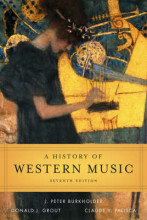France, England, Spain, and the New World in the Seventeenth Century
15 important questions on France, England, Spain, and the New World in the Seventeenth Century
What were the differences in national styles in the Baroque (comparing French, Italian, English, German, and Spanish)?
In England, public concerts were more influential than the monarch
Germany followed Italy's tastes
Spain followed its own path
How did Louis XIV maintain power?
Court ballet and Louis XIV's role in it
Louis XIV earned a reputation as a superior dancer and performer in roles that reinforced him as the "sung king"
- Higher grades + faster learning
- Never study anything twice
- 100% sure, 100% understanding
Music of the Royal Chapel
Vingt-quatre violons du roi & Petits Violons
These were the model for the modern orchestra
Lully as conductor - how did he lay the foundation for future conductors?
Tragedie en musique or tragedie lyrique
recitatif simple vs. recitative mesure
Petit motet vs. grand motet
Grand motet was a multi-section work corresponding to the large-scale concertos of Gabrieli and Schutz
Who were the main composers of late 1600s motets?
Marc-Antoine Charpentier
Michel-Richard de Lalande
French organ music of the late 1600s
Other national compositional traits leaked into the organ music of the time.
Style luthé (lute style) or style brisé (broken style)
Elisabeth-Claude Jacquet de la Guerre
First recorded child prodigy in music. Best known for her two published collections of harpsichord pieces
8 types of styles in French baroque dance suites
2. Allemande
3. Courante
4. Sarabande
5. Gigue
6. Rondeau
7. Gavotte
8. Minuet
La purpura de la rosa (The Blood of the Rose)
Music by Velasco to a libretto adapted from Hidalgo's first opera.
The question on the page originate from the summary of the following study material:
- A unique study and practice tool
- Never study anything twice again
- Get the grades you hope for
- 100% sure, 100% understanding
































